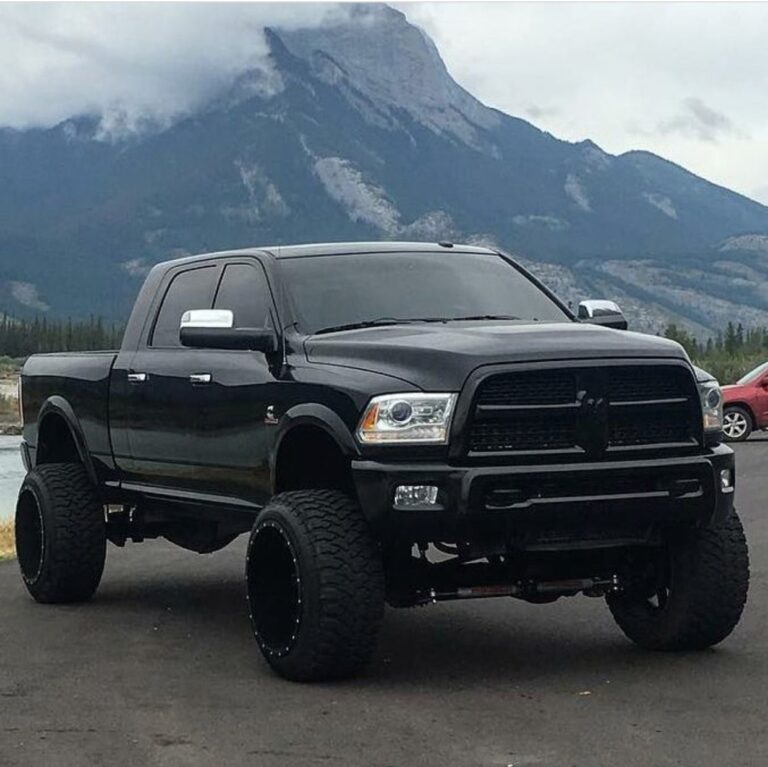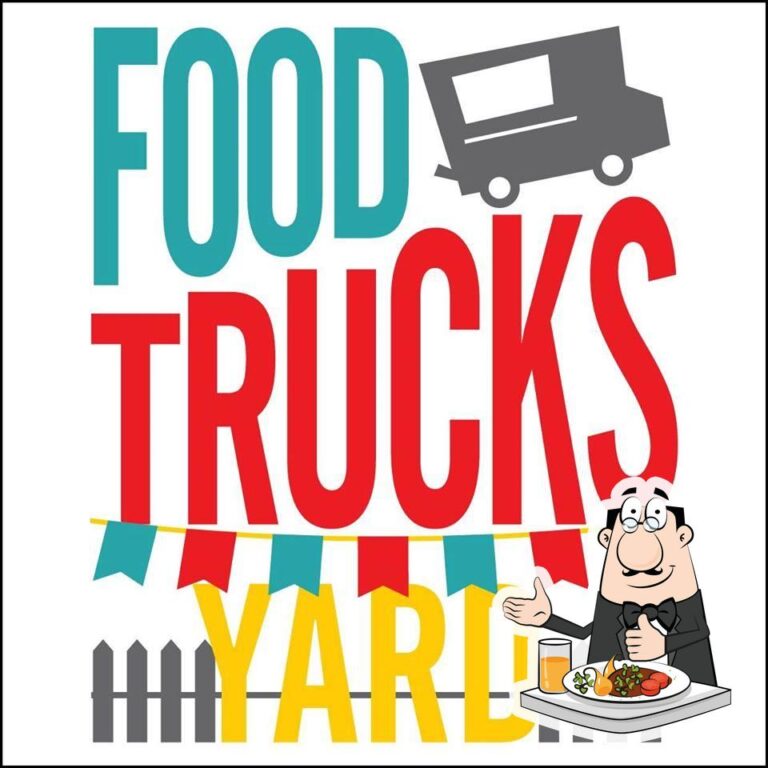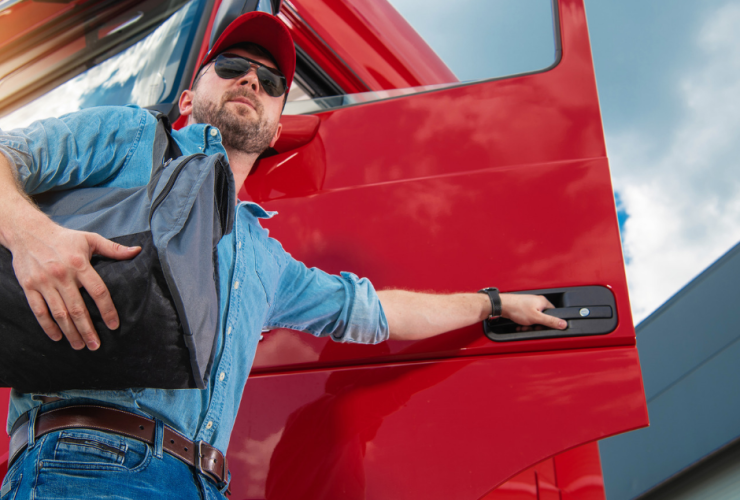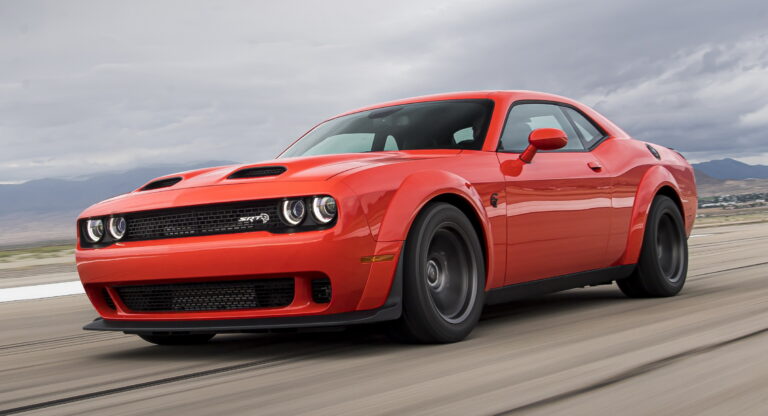Used Stepside Trucks For Sale: A Comprehensive Buyer’s Guide
Used Stepside Trucks For Sale: A Comprehensive Buyer’s Guide cars.truckstrend.com
In the vast landscape of automotive history, few vehicles hold as much charm and distinctive appeal as the stepside truck. With their iconic narrow beds, external rear fenders, and often practical side steps, these trucks evoke a sense of nostalgia and rugged individuality. While modern trucks have largely transitioned to the wider, integrated "fleetside" bed, the stepside remains a coveted classic for enthusiasts, collectors, and those simply seeking a vehicle with character. This comprehensive guide delves into everything you need to know about navigating the market for used stepside trucks for sale, offering insights, tips, and practical advice to help you find your perfect vintage workhorse or showpiece.
What Makes a Stepside Truck Unique?
Used Stepside Trucks For Sale: A Comprehensive Buyer’s Guide
A stepside truck, often referred to by manufacturers as "Flareside" (Ford), "Utiline" (GMC), or simply "step-side" by Chevrolet, is defined by its distinct bed design. Unlike the smooth, flush sides of a fleetside bed, a stepside bed features prominent, freestanding rear fenders that extend beyond the bed’s narrow body. Between the cab and the rear wheel well, a small step is typically integrated, providing easier access to the bed.
This design originated from early truck manufacturing techniques, where separate fenders were easier and more cost-effective to produce. Over time, as manufacturing evolved, the integrated fleetside design became more prevalent due to its larger cargo capacity and streamlined aesthetics. However, the stepside endured, celebrated for its classic lines, robust appearance, and often superior ground clearance for the rear wheels. Its unique silhouette instantly sets it apart, making it a head-turner on any road.
Why Buy a Used Stepside?
The allure of a used stepside truck goes beyond mere transportation; it’s an investment in style, history, and a tangible piece of Americana. Here are several compelling reasons to consider one:
- Classic Appeal and Unique Aesthetics: Stepsides possess an undeniable vintage charm that modern trucks simply cannot replicate. They stand out in a parking lot full of contemporary vehicles, drawing admiring glances and sparking conversations.
- Nostalgia and Heritage: For many, owning a stepside is a trip down memory lane, reminiscent of simpler times or the trucks their grandparents drove. They embody a bygone era of straightforward, utilitarian design.
- Customization Canvas: The relatively simple mechanical and body designs of older stepsides make them ideal platforms for customization. From engine swaps and suspension lifts to unique paint jobs and interior overhauls, the possibilities are endless for creating a personalized vehicle.
- Potential for Appreciation: While not all used vehicles appreciate in value, well-maintained or professionally restored stepside trucks, especially popular models from the 1950s-1970s, can hold or even increase their value over time, making them a tangible asset.
- Simpler Mechanics: Older stepside trucks generally feature less complex electronics and mechanical systems compared to modern vehicles. This can make them easier and often less expensive for a DIY enthusiast to maintain, repair, and upgrade.
- Cost-Effectiveness (Compared to New): While fully restored models can fetch high prices, project trucks or those in "driver" condition are often significantly more affordable than a new truck, offering entry into the classic vehicle world without breaking the bank.

Popular Used Stepside Models to Look For
The market for used stepside trucks is diverse, with offerings from various manufacturers, each with its own loyal following. Some of the most sought-after models include:
- Chevrolet C/K Series: The Chevrolet C10 and K10 (2WD and 4WD, respectively) from the 1960s to 1980s are arguably the most iconic and popular stepsides. The "Action Line" (1967-1972) and "Squarebody" (1973-1987) generations are particularly beloved for their timeless design, robust chassis, and abundant aftermarket support.
- Ford F-Series (F-100/F-150): Ford’s "Flareside" bed, their version of the stepside, adorned the F-Series trucks for decades. Models from the 1950s (e.g., the "Effie" F-100) through the 1970s are highly prized for their durability and classic Ford styling.
- GMC C/K Series: As Chevrolet’s sibling, GMC’s C/K series trucks shared many components with their Chevy counterparts but often featured unique grilles and trim, offering a slightly different aesthetic.
- Dodge D-Series: Dodge’s D-series trucks from the 1960s and 1970s, while perhaps less common than their Chevy and Ford rivals, offer a distinct Mopar flair and rugged construction. Finding a well-preserved Dodge stepside can be a unique score.
When searching, be aware that while "stepside" is a common descriptive term, manufacturers used their own names for this bed style.
Where to Find Used Stepside Trucks
Finding your ideal stepside requires patience and knowing where to look:
- Online Marketplaces: Websites like Craigslist, Facebook Marketplace, and eBay Motors are prime spots for private sellers. Be prepared to sift through many listings and exercise caution.
- Classic Car Dealerships: Reputable classic car dealers often have a selection of restored or well-maintained stepsides. While prices might be higher, you often get a pre-vetted vehicle and some level of guarantee.
- Specialized Auctions: Platforms like Bring a Trailer, Hemmings Auctions, and major live auctions (Mecum, Barrett-Jackson) frequently feature high-quality or rare stepside trucks.
- Automotive Forums and Clubs: Online forums dedicated to specific truck brands (e.g., ChevyTalk, Ford-Trucks.com) and local classic car clubs are excellent resources. Members often sell their vehicles directly, and you can tap into collective knowledge.
- Local Classifieds and Word-of-Mouth: Don’t underestimate the power of local newspaper ads, community bulletin boards, or simply telling friends and family you’re looking. Barn finds still happen!
Key Considerations Before Buying
Before you commit to a purchase, a thorough evaluation is essential:
- Budget: Determine not just your purchase budget, but also funds for potential repairs, restoration, insurance, and ongoing maintenance. Older vehicles often come with hidden costs.
- Intended Use: Will it be a daily driver, a weekend cruiser, a show truck, or a full-blown restoration project? Your intended use will dictate the level of condition you should seek.
- Rust: This is the nemesis of older trucks. Inspect the frame, cab mounts, floorboards, rocker panels, bed floor, and especially the lower portions of the external fenders. Surface rust is manageable, but extensive structural rust is a major red flag and costly to repair.
- Mechanical Condition: Evaluate the engine (look for smoke, strange noises, leaks), transmission (smooth shifting, no grinding), brakes, steering, and suspension. A pre-purchase inspection by a trusted mechanic specializing in vintage vehicles is highly recommended.
- Body and Interior: Check for significant dents, bondo (use a magnet to detect thick filler), proper panel alignment, glass condition, and interior wear (seats, dashboard, headliner).
- Originality vs. Modification: Decide if you want a truck as close to original as possible or one that has been modified. Modifications can add value or detract from it, depending on quality and taste.
- Paperwork: Ensure the title is clear, matches the VIN on the truck, and there are no liens. Verify the VIN and engine numbers if originality is important.
Inspecting a Used Stepside Truck
When you’ve found a promising candidate, perform a meticulous inspection:
- Exterior: Walk around the entire truck. Look for consistent paint color (indicates no major repaints or repairs). Check for rust in common areas (wheel wells, door bottoms, cab corners, bed seams). Open and close all doors, the hood, and the tailgate to check for alignment and function.
- Underneath: Get under the truck if possible (or use a lift at a shop). Inspect the frame for cracks, bends, or severe rust. Check suspension components, brake lines, fuel lines, and exhaust for damage or leaks.
- Engine Bay: Look for fluid leaks (oil, coolant, power steering), frayed belts, corroded battery terminals, and general cleanliness. A very clean engine might hide leaks, while a dirty one might just be neglected. Check fluid levels.
- Interior: Examine the seats for tears, the dash for cracks, and the headliner for sagging. Test all lights, wipers, horn, radio, and heater/AC. Look for signs of water leaks.
- Test Drive: This is crucial. Listen for unusual noises (engine, transmission, differential, suspension). Check steering for play, brakes for pull or fade, and acceleration for smoothness. Pay attention to how the transmission shifts. Test both hot and cold starts if possible.
- Professional Inspection: For any serious contender, invest in a pre-purchase inspection (PPI) by a mechanic experienced with classic vehicles. They can identify issues you might miss and provide an estimate for necessary repairs.
Restoration vs. Daily Driver vs. Project
Your approach to buying a used stepside often falls into one of these categories:
- Project Truck: These are the most affordable entry point, often non-running or in dire need of extensive body and mechanical work. Ideal for DIY enthusiasts with time, tools, and a strong desire to learn. Be prepared for significant investment in parts and labor.
- Daily Driver Quality: These trucks are running, driving, and generally roadworthy, but will have cosmetic flaws, minor mechanical issues, or require ongoing maintenance. They offer the joy of immediate ownership with the potential for gradual improvements.
- Restored/Show Truck: These are at the highest end of the price spectrum, having undergone professional restoration. They are typically in excellent mechanical and cosmetic condition, ready for shows or immediate enjoyment. While less work initially, they might be too pristine for regular daily use.
Tips for a Successful Purchase
- Do Your Homework: Research the specific model and year you’re interested in. Understand common issues, availability of parts, and typical price ranges.
- Be Patient: The right truck might not appear overnight. Don’t rush into a purchase.
- Bring a Knowledgeable Friend: A second pair of eyes, especially someone familiar with classic trucks, can be invaluable.
- Negotiate: Always be prepared to negotiate the price.
- Get it in Writing: Ensure all agreements, especially regarding condition or promised repairs, are in writing.
Potential Challenges and Solutions
Owning a vintage stepside truck comes with its unique set of challenges, but solutions are often readily available:
- Parts Availability: For popular models like Chevy C10s and Ford F-Series, reproduction parts are abundant, covering everything from body panels to interior trim. For rarer models, online forums, junkyards, and specialized vintage parts suppliers are your best bet.
- Rust Repair: This is often the most significant challenge. For minor rust, DIY repair is possible. For extensive structural rust, professional welding and bodywork are necessary, which can be costly.
- Finding Skilled Mechanics: Not all modern mechanics are equipped or experienced with older carbureted engines, drum brakes, or non-computerized systems. Seek out independent shops specializing in vintage or hot rod vehicles.
- Insurance: Standard auto insurance might not fully cover a classic truck’s true value. Consider specialized classic car insurance providers like Hagerty or Grundy, which offer agreed-value policies.
Price Table: Estimated Ranges for Used Stepside Trucks
Please note: Prices for used stepside trucks vary wildly based on condition, specific model year, engine, transmission, originality, modifications, geographical location, and current market demand. This table provides estimated ranges for popular models.
| Model/Era (Example) | Condition Category | Estimated Price Range (USD) | Key Characteristics & Notes |
|---|---|---|---|
| Chevy C10 / GMC K10 | Project | $5,000 – $15,000 | Significant rust, non-running, missing parts, needs full restoration. |
| (1960s-1970s "Action Line") | Driver Quality | $15,000 – $35,000 | Running, driving, roadworthy, but with cosmetic flaws, minor mechanical issues, or older repairs. |
| Restored/Show | $35,000 – $70,000+ | Professionally restored, excellent mechanical and cosmetic condition, show-ready, often with upgrades. | |
| Ford F-Series (F-100/F-150) | Project | $4,000 – $12,000 | Extensive rust, non-running, often stripped for parts, requires complete overhaul. |
| (1950s-1970s "Flareside") | Driver Quality | $12,000 – $30,000 | Functional and presentable, but may have dents, faded paint, or minor mechanical issues. Usable for regular cruising. |
| Restored/Show | $30,000 – $60,000+ | High-quality paint, pristine interior, rebuilt engine/drivetrain, show-winning potential. | |
| Dodge D-Series | Project | $3,000 – $10,000 | Less common, parts might be harder to source, often very rough condition. |
| (1960s-1970s) | Driver Quality | $10,000 – $25,000 | Good running condition, solid body but might have imperfections. A unique alternative to Chevy/Ford. |
| Restored/Show | $25,000 – $50,000+ | Rare to find fully restored, often custom builds. Values can vary widely depending on rarity and quality of work. | |
| General Note: | Prices are highly dependent on specific year, engine (e.g., V8 vs. I6), transmission (manual vs. automatic), originality, and the level of customization. Rare options or factory performance packages can significantly increase value. |
Frequently Asked Questions (FAQ)
1. What exactly is a stepside truck?
A stepside truck features a narrow cargo bed with prominent, separate rear fenders that stand outside the bed’s main body. It typically has a small step between the cab and the rear wheel for easier access to the bed. This contrasts with a "fleetside" bed, which has smooth, integrated sides that are flush with the cab.
2. Are stepside trucks practical for daily driving?
It depends on the truck’s condition and your expectations. Many stepsides can be made reliable daily drivers with proper maintenance and potentially some modern upgrades (e.g., disc brakes, power steering, fuel injection). However, they lack modern safety features, fuel efficiency, and creature comforts.
3. Are parts hard to find for old stepside trucks?
For popular models like Chevrolet C10s and Ford F-Series trucks from the 1960s-1980s, parts availability is excellent. Many reproduction parts are manufactured, and original used parts are available through salvage yards and online communities. Rarer models might require more effort to source specific components.
4. How much does it cost to restore a stepside truck?
The cost of restoration varies dramatically. A full, professional, frame-off restoration can easily cost $30,000 to $70,000 or more, depending on the truck’s initial condition and the desired level of finish. A DIY restoration can be significantly cheaper but requires time, tools, and skills.
5. What’s the difference between a stepside and a fleetside?
A stepside (or Flareside, Utiline) truck has external rear fenders and a narrower bed with side steps. A fleetside (or Styleside, Sweptline) truck has smooth, integrated bed sides that are flush with the cab, offering a wider cargo area.
6. Can I get classic car insurance for a used stepside?
Yes, absolutely. In fact, it’s often recommended. Specialized classic car insurance providers (like Hagerty or Grundy) offer "agreed value" policies, meaning they’ll pay out a pre-agreed amount if your truck is totaled, rather than a depreciated market value. They also often have lower premiums due to limited use.
7. Are stepside trucks a good investment?
While not every used stepside will appreciate, well-maintained, original, or professionally restored examples of popular models (especially from the 1960s-1970s) can be solid investments. Their classic appeal and finite numbers contribute to their enduring value, though market trends can fluctuate.
Conclusion
The pursuit of a used stepside truck is more than just buying a vehicle; it’s embarking on a journey into automotive history and personal expression. Whether you envision a meticulous restoration project, a rugged daily driver, or a show-stopping custom build, the unique charm and undeniable character of a stepside truck offer an experience unlike any other. By understanding their unique appeal, knowing where to look, and meticulously evaluating potential purchases, you can confidently navigate the market and find that perfect classic truck to call your own. The road ahead with a stepside is sure to be filled with admiration, nostalgia, and the timeless joy of driving a true icon.





